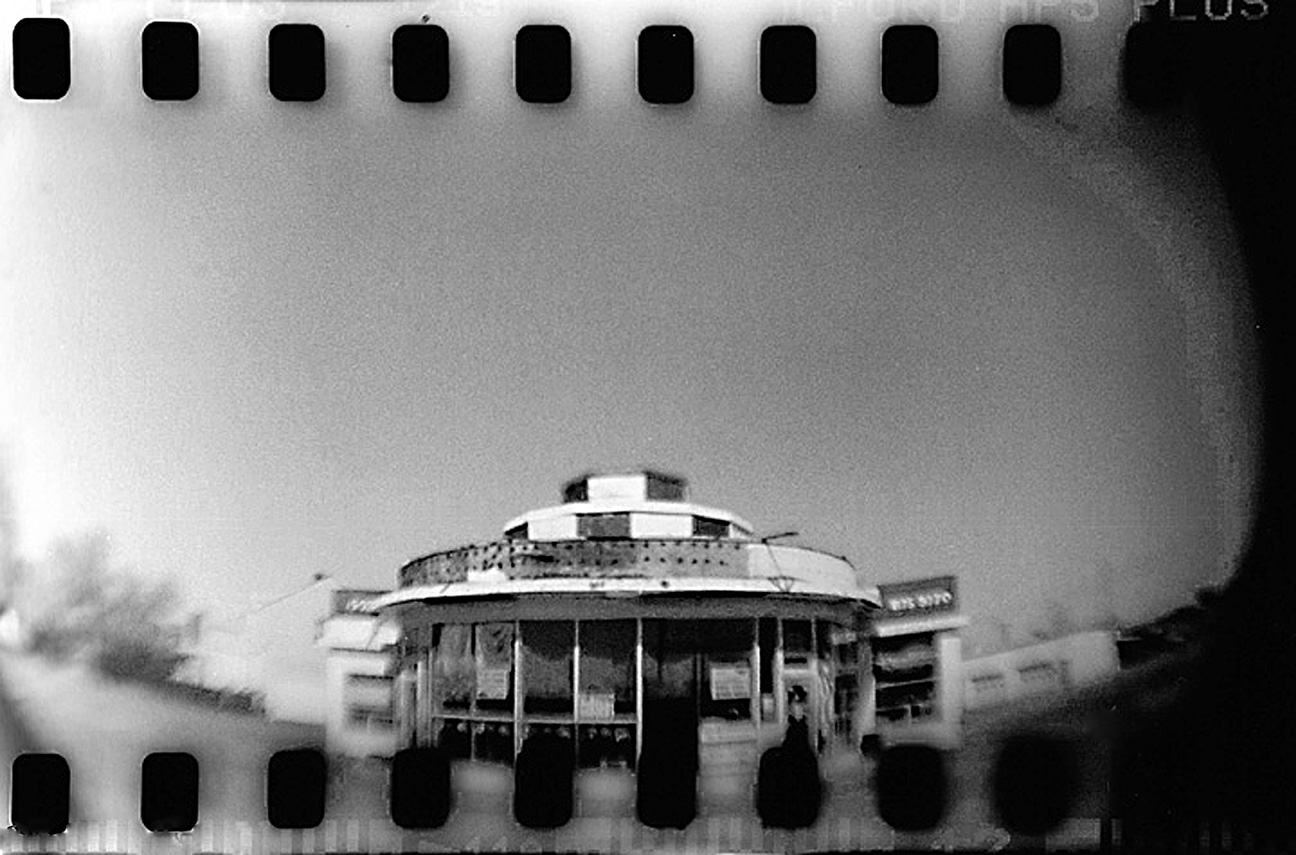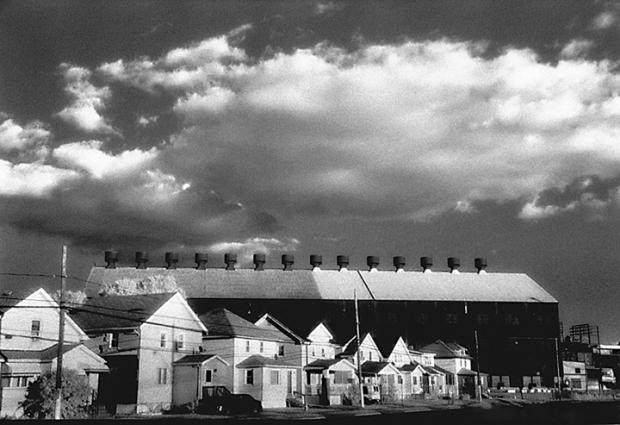Monument: bobCollignon at CEPA Gallery
Monument, the current CEPA exhibit of photos by bobCollignon, starts with definitions. Two lists of synonyms of the title word. The first more or less literal and concrete—or more likely stone or marble—like tombstone, headstone, obelisk, mausoleum, cairn. The second more or less figurative, like testament, record, witness, memento.
The photos present a wide range of disparate subject matter. A pile of old automobile hubcaps. A little suburban house with neatly trimmed lawn and perimeter flowers, and in the middle of the lawn—as a decorative centerpiece as it were—a tree stump painted white. A view south along Route 5 in Lackawanna of an enormous dirty black Bethlehem Steel building—one of the buildings that went up in smoky flames last week—and row of white by contrast workers’ houses along the highway in unnervingly close proximity to the industrial structure. A looking skyward view of electrical power lines and smokestacks of a coal-fired generating plant. Ancient ruins of a pickup truck composting in a rural location in or near a woods.
Each photo is also entitled “monument,” plus a word or phrase descriptive of the actual subject matter. But after looking at the exhibit a while, you realize that each photo—each subject—is indeed a monument of some sort. Memorial, witness, testament, memento. Of something that once was—was other than it was when it was photographed—or happened.
Moreover, after looking at the exhibit a while, you realize, every photo is a monument. Not just every photo in the show, but every photo, period, ever. Memorial, witness, testament, memento. A word not in either of the synonym lists but that could be is “photograph.”
So an exhibit about the photos on show as monumental, but also about photography—the art and practice of photography—as monumental. In the sense of making monuments. Of every subject photographed. As well as of its own photo artifacts, apart from any subject matter. Memorial, witness, testament, memento.

And also about photographers—other photographers and artists—their monuments, their works. Sometimes specifically naming the other photographer or artist, sometimes tacitly referencing, in terms of imagery or style or technique.
Specifically naming in an enigmatic photo of some sort of livestock pen or shelter constructions, foreground, and behind these, a little hill, and on the hill—or maybe behind it, but rising above it—a large deciduous species tree in full foliage. The full title of the piece is monument: Sepulcher / Ode to Uelsmann. Reference to photographer Jerry Uelsmann’s iconic strange photo of a tree in full foliage and roots exposed, floating above what looks like a little brushy island in a lake, above what looks like a huge open peapod in the lake.
Tacitly referencing painter and photographer Ed Ruscha—his series Twentysix Gasoline Stations—in a photo of a desolate looking abandoned modernist design station; photographer Robert Frank—his book The Americans—in several photos incorporating American flags in light irony less than formal military protocol display; sculptor Richard Serra in a photo featuring a large standing upright slab of possibly concrete on a grassy margin strip beside a tilled farm field; graphic artist and photographer Julian Montague’s taxonomic series on wayward shopping carts in a photo of a deformed cart discarded in thick brush such as alongside lower Scajaquada Creek—a favorite locale for old and decrepit shopping carts—when it’s their time—to go and seek a quiet final resting place.
A collage photo called Motherhood consists of largely vintage images in a range from Photo-pictorialist to Photo-shopped. A photo called Gateway / Gethsemane, a misty morning scene of two brick pillars—possibly gateway pillars in a cemetery—and camera artifact stream of sunlight, and double-exposure ghost image of a standard mortality symbol urn. All in all reminiscent of photos—however produced—in association with late 19th-century era séance spiritualist activities, as purported certain proof of the presence of evoked spirits, and thus the effectiveness of the séance.
A more creditable sort of spiritual evocation in a work called Altar. What looks like an Indian burial mound—or it could be just an enormous granite boulder—you can’t tell for sure—but with an immanence—a mana—either way, as burial mound or enormous boulder—amid thick misty vaporous emanations.
The exhibit continues through December 17.
monument
CEPA / 617 Main St, Buffalo / 856-2717 / cepagallery.org

